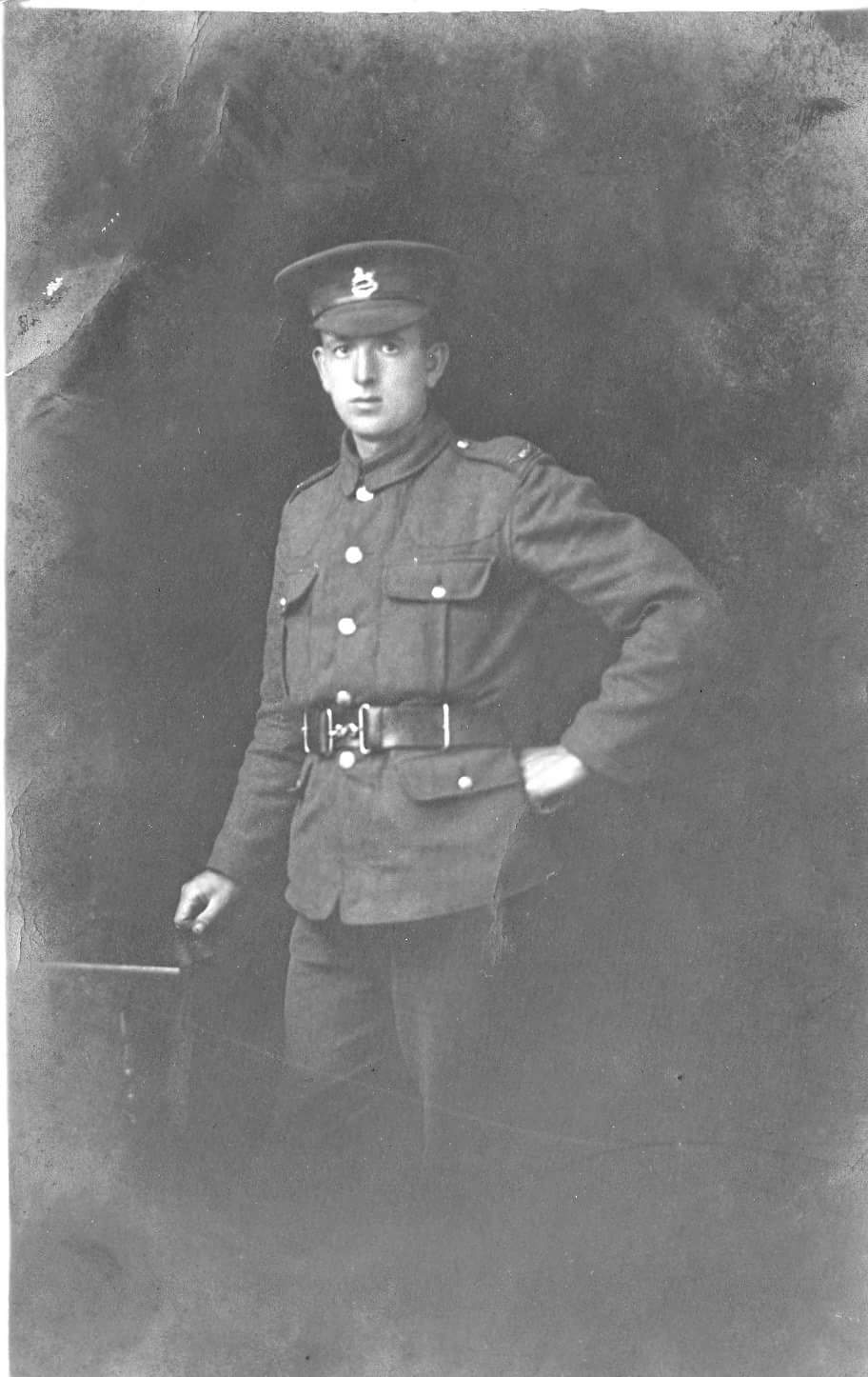Rfn
Hugh Williams
Informationen zu Geburt
|
Geburtsjahr: 1889 |
|
Geburtsort: Kingswinford, Dudley, Staffordshire, England, Vereinigtes Königreich |
Allgemeine Informationen
|
Beruf: Eisenarbeiter |
Informationen zum Armeedienst
|
Land: England, Vereinigtes Königreich |
|
Truppe: British Expeditionary Force |
|
Rang: Rifleman |
|
Dienstnummer: 380561 |
|
Einberufung ort: Rochdale, Lancashire, England, Vereinigtes Königreich |
|
Einheiten: — King's [ Liverpool] Reg 2 5th Bn (Letzte bekannte Einheit) |
Informationen zu Tod
|
Sterbedatum: 03/11/1917 |
|
Sterbeort: Eagle Trench - Winterstellung, Langemark, Belgien |
|
Todesursache: Missing in action |
|
Alter: 28 |
Gedenkstätte
|
Tyne Cot Memorial Tafel: 34A |
Auszeichnungen und Orden 2
|
British War Medal Medaille — 13/05/1917 |
|
Victory Medal Medaille — 13/05/1917 |
Punkte von Interesse 3
| #1 | Geburtsort | ||
| #2 | Einberufung ort | ||
| #3 | Ort des Todes (ungefähr) |
Meine Geschichte
Hugh Williams was a 28 year old iron worker form Kingswinford, Dudley. Rifleman Williams was part of the 2/5th Battalion The King’s (Liverpool Regiment), 171st Brigade, 57th Division. At the end of October and the beginning of November, his battalion was part of a rotation system with the 2/6th, 2/7th and 2/8th The King’s. Alternatively, they were stationed at the front line (Requete Farm – Berthier Farm – Besage Farm – Bower House – Gravel Farm – Broembeek), in support at Eagle Trench and in reserve at Huddleston Camp and Masourin Farm/Camp.
The conditions on the frontline were so bad that each battalion stayed no more than one day before being relieved. On the 1st of November at 6 p.m., the 2/5th Battalion arrived at the line in support of the 2/8th Battalion. They encountered heavy shelling on their right near the Steenbeek. In the night of the 1st to the 2nd November, they were confronted with heavy gas shelling. The number of casualties was high. On November the 2nd, at 9.30 p.m., eventually, they were relieved by the 2/10th King’s Liverpool Regiment and they marched to Wolff Camp. Rifleman Williams never made it to Wolff Camp and was reported missing in action on the 3rd of November. His body was never found. Today, he is remembered at the Tyne Cot Memorial, panel 34A.
The conditions on the frontline were so bad that each battalion stayed no more than one day before being relieved. On the 1st of November at 6 p.m., the 2/5th Battalion arrived at the line in support of the 2/8th Battalion. They encountered heavy shelling on their right near the Steenbeek. In the night of the 1st to the 2nd November, they were confronted with heavy gas shelling. The number of casualties was high. On November the 2nd, at 9.30 p.m., eventually, they were relieved by the 2/10th King’s Liverpool Regiment and they marched to Wolff Camp. Rifleman Williams never made it to Wolff Camp and was reported missing in action on the 3rd of November. His body was never found. Today, he is remembered at the Tyne Cot Memorial, panel 34A.
Quellen 5
|
Ancestry https://www.ancestry.com Verwendete Quellen |
|
CWGC https://www.cwgc.org/find-records/find-war-dead/casualty-details/877299/HUGH%20WILLIAMS/ Verwendete Quellen |
|
Naval and Military Archive http://www.nmarchive.com Verwendete Quellen |
|
The Long Long Trail http://www.longlongtrail.co.uk Verwendete Quellen |
|
Wyrall Everard. The history of the King's Regiment (Liverpool) : 1914-1919. Londen: Edward Arnold & Co., 1928. Volume 3, 537-39. Verwendete Quellen |
